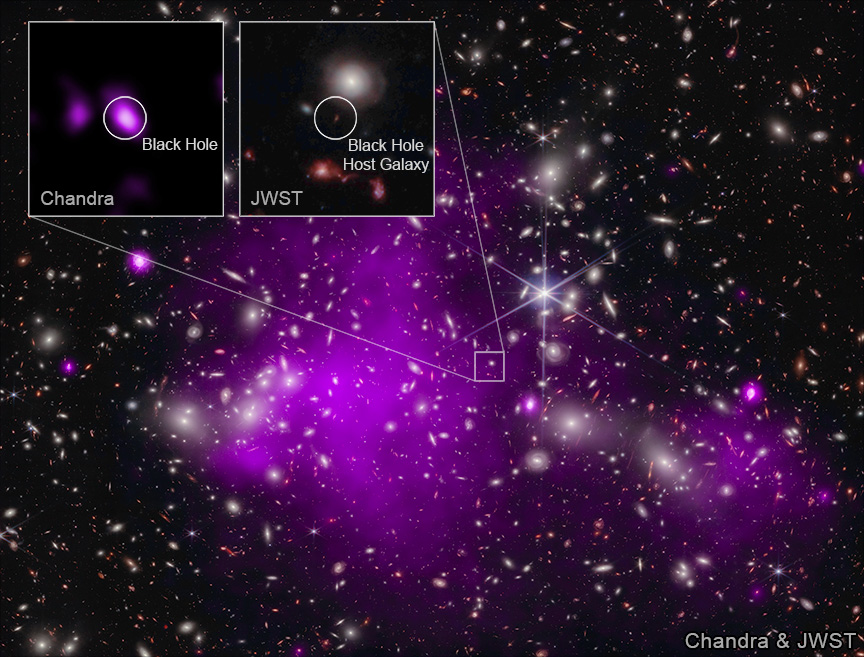
 Credit: X-ray: NASA/CXC/SAO/Akos Bogdan; Infrared: NASA/ESA/CSA/STScI; Image Processing: NASA/CXC/SAO/L. Frattare & K. Arcand
Credit: X-ray: NASA/CXC/SAO/Akos Bogdan; Infrared: NASA/ESA/CSA/STScI; Image Processing: NASA/CXC/SAO/L. Frattare & K. Arcand
Our New Universe Already Had a Hole in It
Black holes are objects totally collapsed by gravity. This collapse produces a rip spacetime, forming a region of space from which no information can emerge. This means that anything inside a region of space called the "Event Horizon" is effectively outside the boundaries of our Universe: we can have no knowledge of any event which happens inside the event horizon. Black holes can form from the gravitational collapse of extremely massive stars, and can grow in mass by swallowing gas, dust, stars or other matter, or can grow by merging with another nearby black hole (an event which broadcasts itself by emitting gravitational waves, which - astonishingly - we have now detected). We see monster black holes, more massive than millions or billions of Suns, at the centers of many galaxies, including our Milky Way. We're still not sure why they are there, or where such "monster" black holes come from. To understand how these black holes form and evolve, scientists have been actively looking back in time, to some of the most distant objects in the Universe, to see what the young Universe was like, and to see whether supermassive black holes existed way back then. Using X-ray images from the Chandra X-ray Observatory, scientists have recently identified a supermassive black hole in a distant galaxy called UHZ1. X-rays are a prime black hole signature, since actively feeding black holes emit lots of X-rays as accreting material spirals into the black hole and heats up to X-ray emitting temperatures. UHZ1 was identified as the host of the X-ray source by deep observations of the galaxy cluster Abell 2744 by JWST. The JWST observations help show that UHZ1 is extremely distant, and light from the galaxy began its journey to us when the Universe was only 500 million years old. The Chandra X-ray emission from the supermassive black hole in UHZ1 is consistent with accretion onto a supermassive black hole having a mass equivalent to tens or hundreds of millions of Suns. This black hole is the most distant black hole yet discovered. The presence of this supermassive black hole when the Universe was only 3% of its current age may indicate that such early monsters may have formed through the direct collapse of heavy seed objects, such as massive clouds or star clusters with masses of tens to hundreds of thousands of Suns.
Published: November 20, 2023
<
HEA Dictionary ● Archive
● Search HEAPOW
● Other Languages
● HEAPOW on Facebook
● Download all Images
● Education ● HEAD
>

Each week the HEASARC
brings you new, exciting and beautiful images from X-ray and Gamma ray
astronomy. Check back each week and be sure to check out the HEAPOW archive!
Page Author: Dr. Michael F. Corcoran
Last modified Monday, 26-Feb-2024 17:24:16 EST


